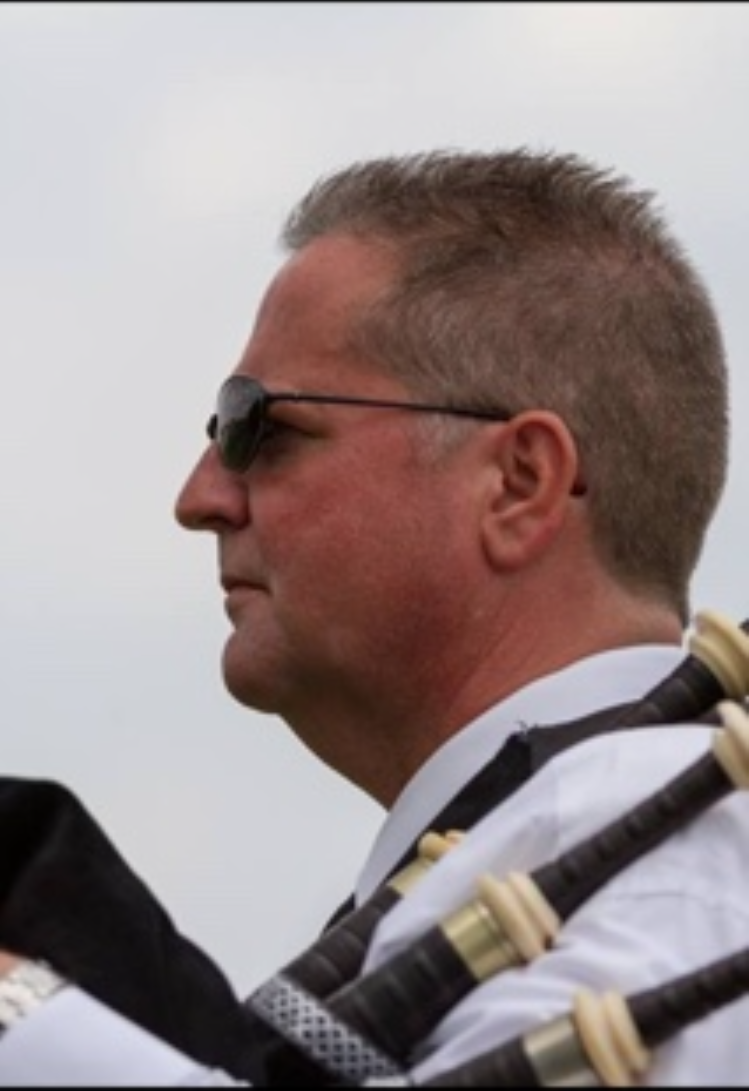BMW Compatible Repository
Full PDF Book
Music and Memories
Unforgotten Laddie
The Osprey
Easy Coming
It’s No Reel (or It’s No Reel, JIMMY!)
Forgotten Laddie is maybe one of John’s most overlooked tunes. The Osprey and Easy Coming are a couple of solid jigs. And of
course, if you say it in a Scots accent, it becomes “It’s no real (JIMMY!)”. It’s unreal. Also, it’s not a reel. So very John. He
mirthfully described it as definitely not a reel. It’s a hornpipe, but you play it like a march. And then two versions of a
quintessential John Mackie tune. He loved to nudge piping convention just a tiny bit. The result was often organic and riding the
leading edge of what is now quite common contemporary piping. The original Wee Hero as well as an updated march version
John put together years after the original.
Places and Locations
Westburn Park
Church Street
O'Connell's
A number of tunes highlight special places in John’s life. The first two commemorate places in his hometown of Aberdeen, Scotland. Including
the street of the family home and a nearby park where John's mom, Margaret, used to take him to play.
O’Connell’s is a well-known pub in St. Louis that’s been the site of many St. Louis pipe band gatherings for going on five decades.
Friends and Family
The Wee Hero
The Wee Hero (march)
Magic Heather
Kit's Tune
George Dixon
Elmo the Pug
Tunes for John’s friends and family. As both a hornpipe and march, The Wee Hero was named in honor of his father, Alec. John’s ex-wife,
Heather, another piper from Chicago, also with family roots in Aberdeen. A tune written for John’s niece Kit. George Dixon was a friendly neighbor to the Mackies when they first moved to St. Louis. It’s one of his earlier pieces. It wasn’t just human friends—John was fond of his friend’s
dog, Elmo.
Bands and Bandmates
As a long-time member of St. Louis Invera’an Pipe Band (now St. Louis Caledonian Pipe Band) as well as other bands in the Chicago area, including the great Midlothian Pipe Band, John made countless connections with bandmates and bands. Many of his tunes are tied to those bands and the people in them.
The Grandstand
Bonsai Bill
Trombold’s Troubles
Drum Major David L. Breese
Charlie’s Comeback
Evette
The Snake in the Well
The Grandstand is a conceptual piece. John envisioned the aural image of a band marching in a parade. The sound getting louder as the band approaches, reaching a crescendo as it passes the reviewing stand. This piece was first performed at a St. Louis St. Andrews Society Burns Supper in 1987 or so. Field drums, tin whistles, various percussion instruments, and even party poppers. It’s been in the band rotation ever since and often a triumphant march-off tune when the band picks up a victory.
The friendships forged in a pipe band are often as important as the music. Those valued connections are seen in a tune to honor St. Louis pipe major Bill Henry and his varied interests and hobbies, including the art of bonsai. Or in the case of Trombold’s Troubles, a tune written to help a bandmate struggling with top and bottom hand transitions. David Breese cut a regal figure as the St. Louis Invera’an drum major for many years. Work took lead drummer Charlie Cablish to Texas for a few years before returning to St. Louis and the band. John welcomed him back to St. Louis with Charlie’s Comeback. Everyone’s dear friend and tenor drummer, Linda Williams, was a producer for local television news broadcasts. Both Trombold’s Troubles and Charlie’s Comeback were published in collections by famed Shotts and Dykehead Pipe Major, Robert Mathieson.
During his time in Chicago, John celebrated his long association with the Midlothian Pipe Band. Evette Swinton is a fellow piper and daughter of the legendary pipe major Ian Swinton. And there’s The Snake in the Well, a ripping hornpipe played by Midlothian for years.
Arrangements and Re-Arrangements
The Ewe with the Crooked Horn
The Lintie
Sleepy Maggie
Molly on the Shore
Dives and Lazarus
Over the years, John arranged and added some of the classics. Turning a classic strathspey into a jig. Or adding a few parts and some harmonies to The Lintie and turning it into almost a ragtime. These are maybe only half the parts that were actually documented of all the parts he came up with on a now infamous bus trip to the Alma Highland Games. A couple of extra parts turned Molly on the Shore into a nice 4-part reel. John didn’t shy from any music. Pipe music, Celtic folk, obscure prog rock, or classical. It all comes together in John’s arrangement of Ralph Vaughn Williams’ arrangement of an old folk song from the British Isles, Dives and Lazarus.
